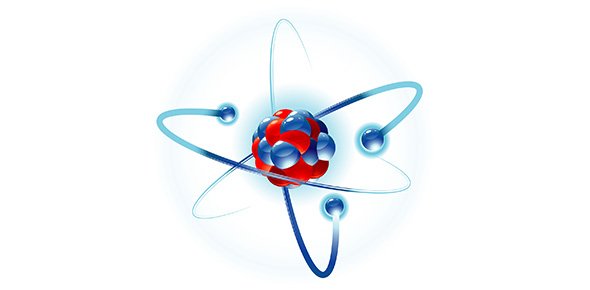Related Flashcards
Related Topics
Cards In This Set
| Front | Back |
|
G1A01 (C) [97.301(d)]
On which of the following bands is a General Class license holder granted all amateur frequency privileges? C. 160, 30, 17, 12, and 10 meters |
G1A02 (B) [97.305]
On which of the following bands is phone operation prohibited? B. 30 meters |
|
G1A03 (B) [97.305]
On which of the following bands is image transmission prohibited? B. 30 meters |
G1A04 (D) [97.303(s)]
Which amateur band restricts communication to specific channels, using only USB voice, and prohibits all other modes, including CW and data? D. 60 meters |
|
G1A05 (A) [97.301(d)]
Which of the following frequencies is in the General Class portion of the 40 meter band? A. 7.250 MHz |
G1A06 (D) [97.301(d)]
Which of the following frequencies is in the 12 meter band? D. 24.940 MHz |
|
G1A07 (C) [97.301(d)]
Which of the following frequencies is within the General class portion of the 75 meter phone band? C. 3900 kHz |
G1A08 (C) [97.301(d)]
Which of the following frequencies is within the General Class portion of the 20 meter phone band? C. 14305 kHz |
|
G1A09 (C) [97.301(d)]
Which of the following frequencies is within the General Class portion of the 80 meter band? C. 3560 kHz |
G1A10 (C) [97.301(d)]
Which of the following frequencies is within the General Class portion of the 15 meter band? C. 21300 kHz |
|
G1A11 (D) [97.301(d)]
Which of the following frequencies is available to a control operator holding a General Class license? A. 28.020 MHz B. 28.350 MHz C. 28.550 MHz D. All of these answers are correct |
G1A12 (B) [97.301]
When a General Class licensee is not permitted to use the entire voice portion of a particular band, which portion of the voice segment is generally available to them? B. The upper end |
|
G1A13 (D) [97.303]
Which amateur band is shared with the Citizens Radio Service? D. None |
G1A14 (C) [97.303]
Which of the following applies when the FCC rules designate the amateur service as a secondary user and another service as a primary user on a band? C. Amateur stations are allowed to use the frequency band only if they do not cause harmful interference to primary users |
|
G1A15 (D) [97.303]
What must you do if, when operating on either the 30 or 60 meter bands, a station in the primary service interferes with your contact? D. Stop transmitting at once and/or move to a clear frequency |
G1A16 (A) [97.303(s)]
Which of the following operating restrictions applies to amateur radio stations as a secondary service in the 60 meter band? A. They must not cause harmful interference to stations operating in other radio services |
|
G1B01 (C) [97.15(a)]
What is the maximum height above ground to which an antenna structure may be erected without requiring notification to the FAA and registration with the FCC, provided it is not at or near a public-use airport? C. 200 feet |
G1B02 (D) [97.203(b)]
With which of the following conditions must beacon stations comply? D. There must be no more than one beacon signal in the same band from a single location |
|
G1B03 (A) [97.1(a)(9)]
Which of the following is a purpose of a beacon station as identified in the FCC Rules? A. Observation of propagation and reception, or other related activities |
G1B04 (A) [97.113(b)]
Which of the following must be true before an amateur station may provide news information to the media during a disaster? A. The information must directly relate to the immediate safety of human life or protection of property and there is no other means of communication available |
|
G1B05 (D) [97.113(a)(4),(e)]
When may music be transmitted by an amateur station? D. When it is an incidental part of a space shuttle or ISS retransmission |
G1B06 (B) [97.113(a)(4) and 97.207(f)]
When is an amateur station permitted to transmit secret codes? B. To control a space station |
|
G1B07 (B) [97.113(a)(4)]
What are the restrictions on the use of abbreviations or procedural signals in the amateur service? A. Only "Q" codes are permitted |
G1B08 (D) [97.113(a)(4), 97.113(e)]
Which of the following is prohibited by the FCC Rules for amateur radio stations? A. Transmission of music as the primary program material during a contact B. The use of obscene or indecent words C. Transmission of false or deceptive messages or signals D. All of these answers are correct |
|
G1B09 (A) [97.113(a)(3)]
When may an amateur station transmit communications in which the licensee or control operator has a pecuniary (monetary) interest? A. Only when other amateurs are being notified of the sale of apparatus normally used in an amateur station and such activity is not done on a regular basis |
G1B10 (C) [97.203(c)]
What is the power limit for beacon stations? C. 100 watts PEP output |
|
G1B11 (C) [97.101(a)]
How does the FCC require an amateur station to be operated in all respects not covered by the Part 97 rules? C. In conformance with good engineering and good amateur practice |
G1B12 (A) [97.101(a)]
Who or what determines "good engineering and good amateur practice" that apply to operation of an amateur station in all respects not covered by the Part 97 rules? A. The FCC |
|
G1B13 (A) [97.121(a)]
What restrictions may the FCC place on an amateur station that is causing interference to a broadcast receiver of good engineering design? A. Restrict the amateur station operation to times other than 8 pm to 10:30 pm local time every day, as well as on Sundays from 10:30 am to 1 pm local time |
G1C01 (A) [97.313(c)(1)]
What is the maximum transmitting power an amateur station may use on 10.140 MHz? A. 200 watts PEP output |




